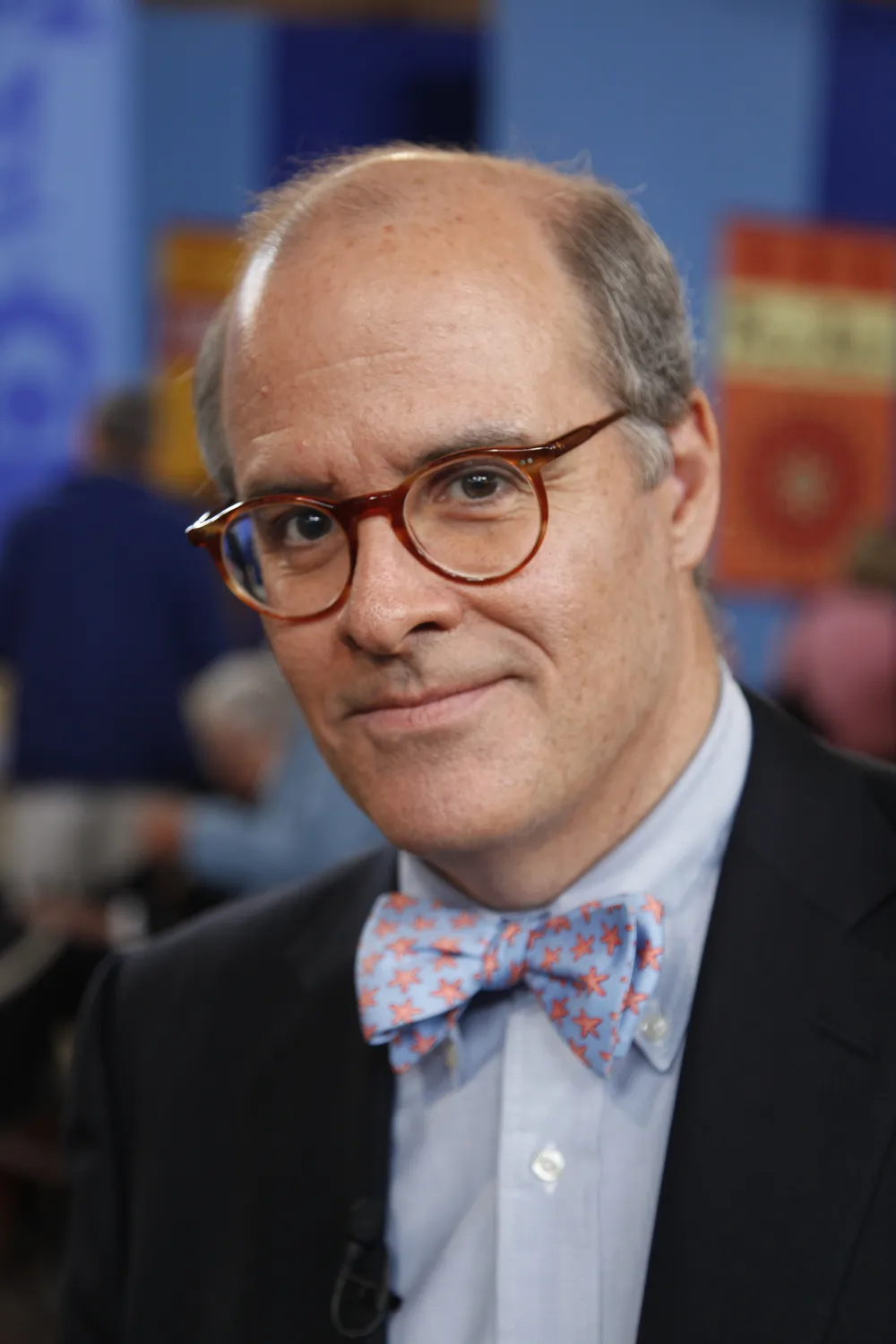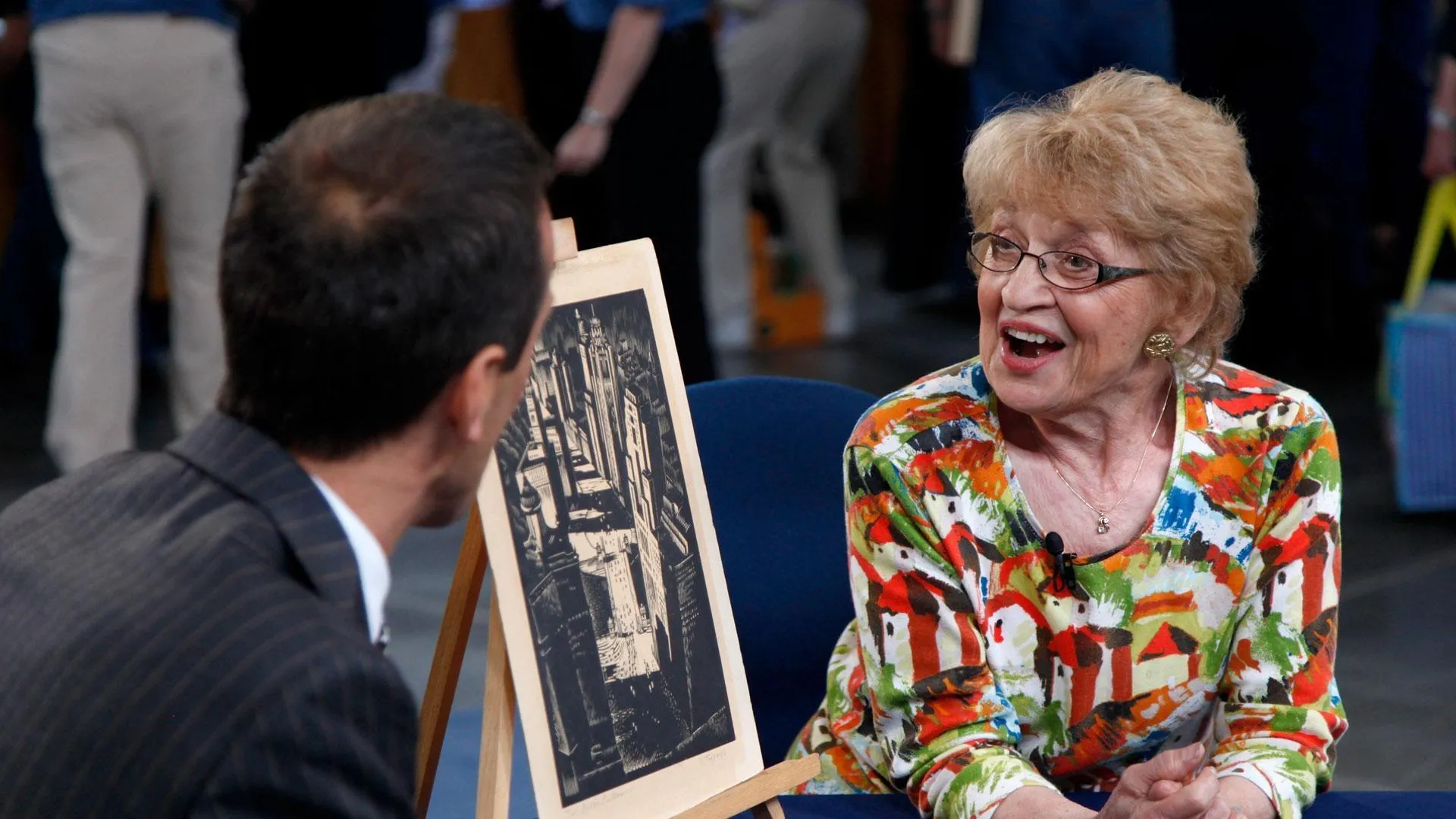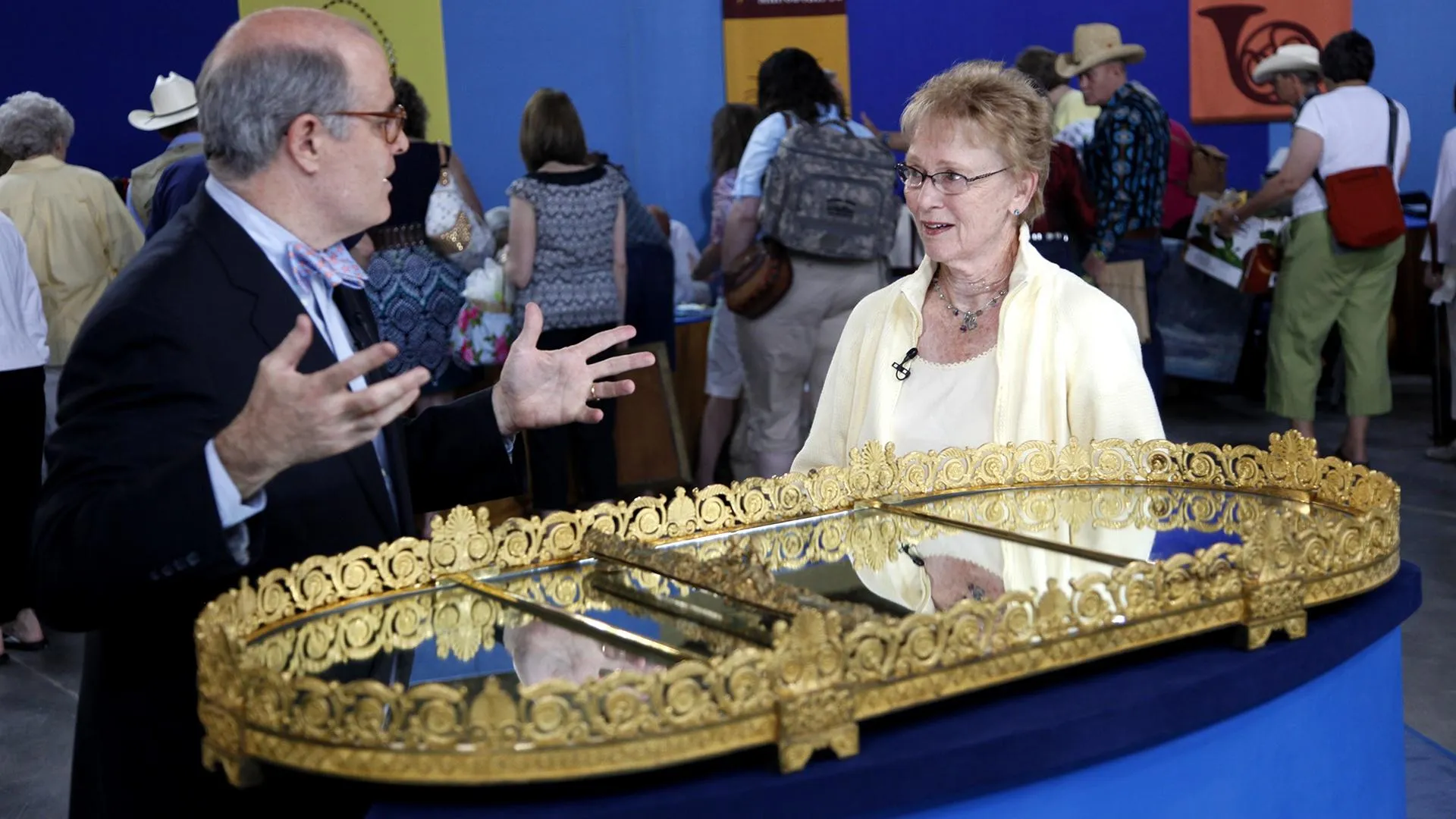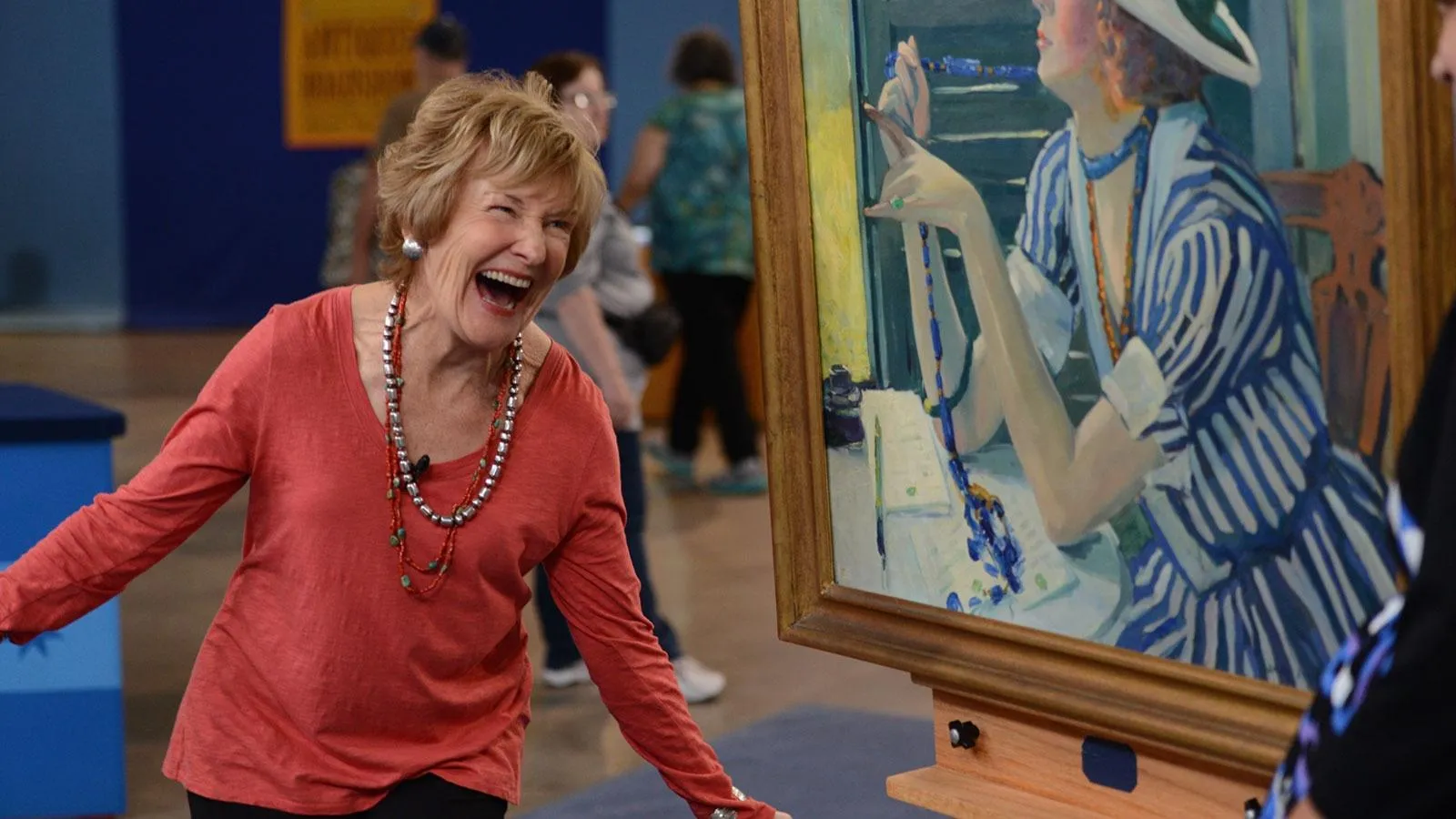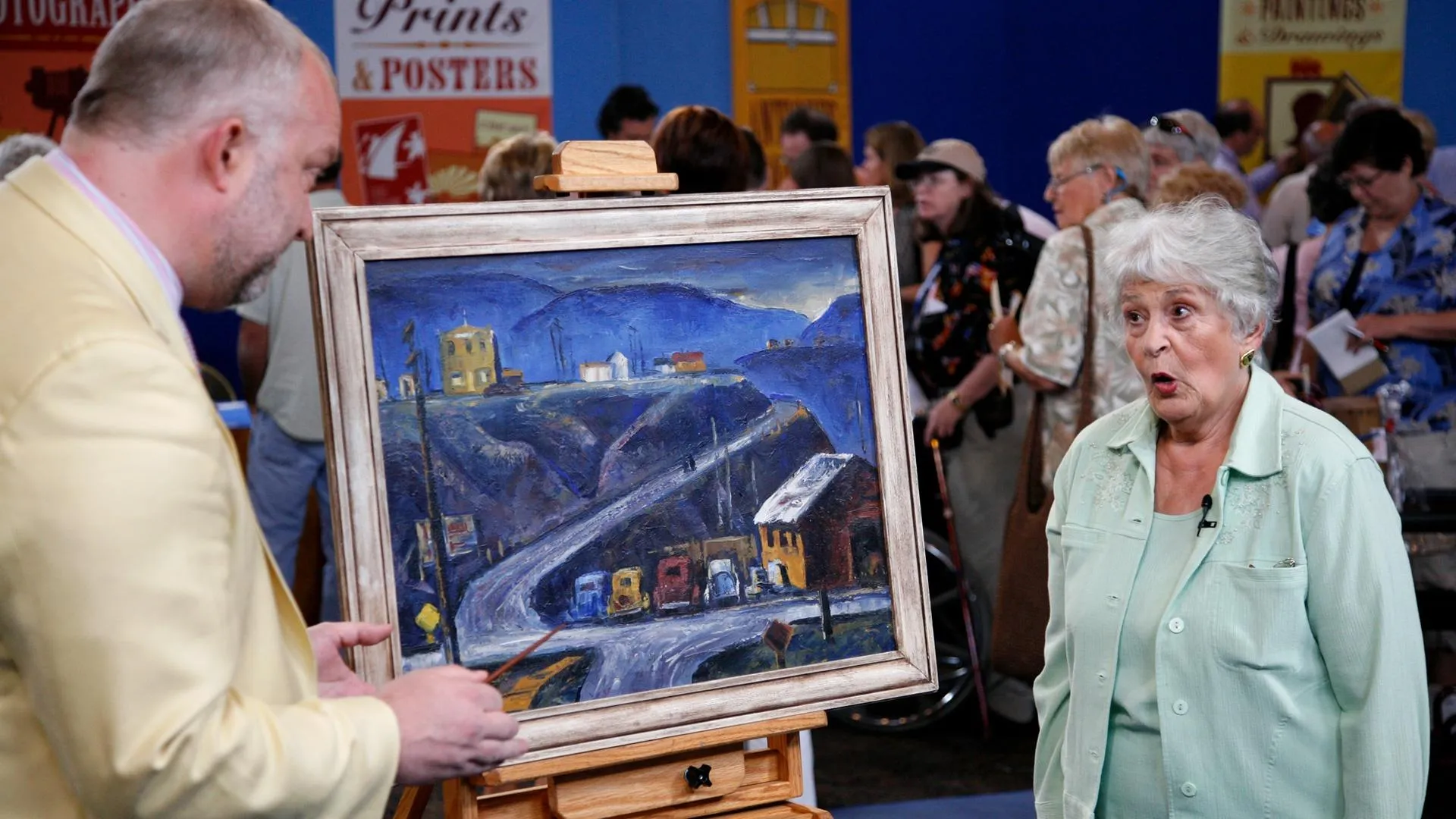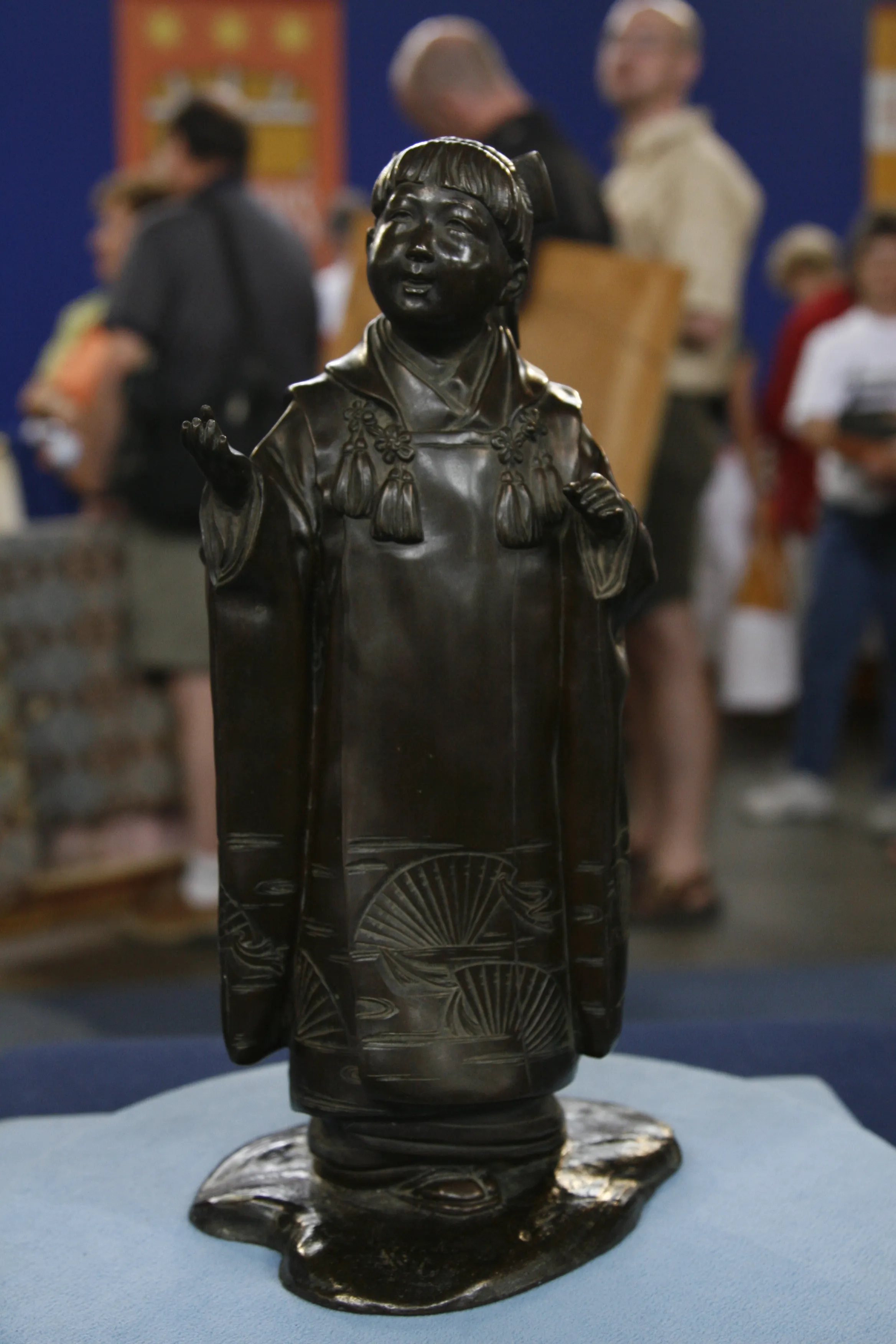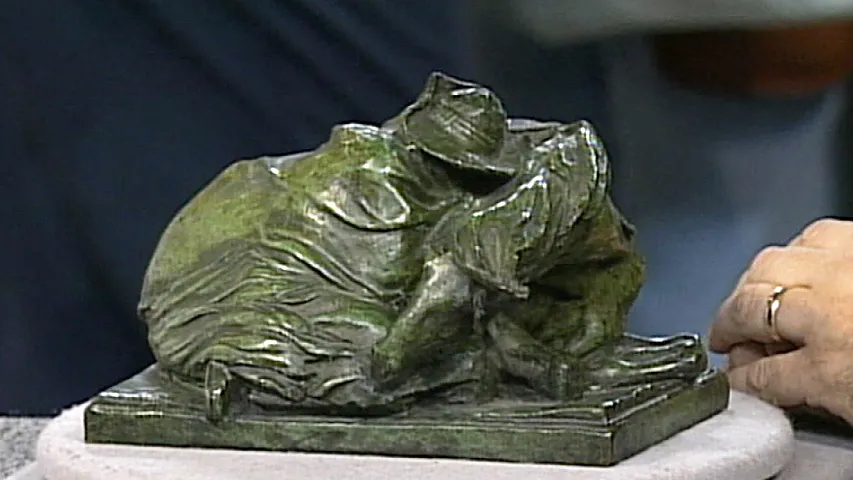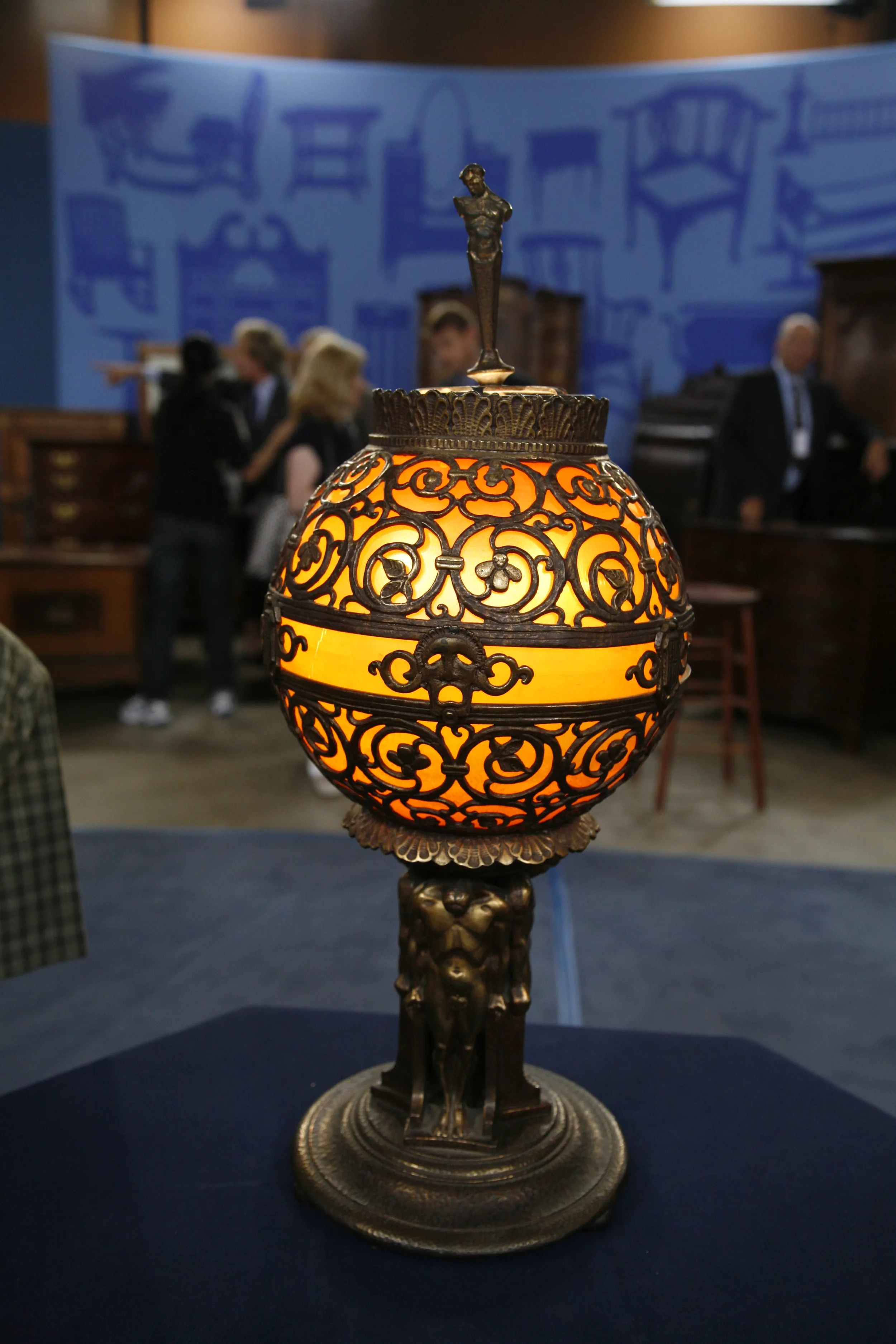GUEST: Our house burned down, we built a new house, and our friends gave us a housewarming party. And our dear friends brought us this object.
APPRAISER: And how have you been displaying it in your home?
GUEST: Well, it comes in three pieces, so we bolted them together in the back and hung it as a mirror, because I thought it belonged on a table. But we didn't have a table big enough.
APPRAISER: Your instinct was right. This was made for a table. It's what we call a plateau.
GUEST: Oh!
APPRAISER: This has all of the spectacular qualities that you hope to find in such a piece. It was used for putting a whole array of fruits and, and ceramic figures. There are wheels...
GUEST: Yes.
APPRAISER: ...on the bottom of the piece.
GUEST: Yes.
APPRAISER: So it could in fact be moved on the tabletop.
GUEST: I see.
APPRAISER: And they are the original wheels. These elements, for example, these anthemions, these were bronze cast pieces, and the surface was applied by fire gilding, which was mercury and gold mixed together, and then heated up. And the gilding would adhere...
GUEST: Stay.
APPRAISER: ...to the bronze mounts.
GUEST: Oh.
APPRAISER: They don't do it anymore because it's rather dangerous to do it.
GUEST: My goodness.
APPRAISER: Now, plateaus are so rare, we would give this an auction estimate of $50,000 to $70,000.
GUEST: Oh, my gosh, John. (laughing): Oh, my gosh, John. No! (laughing): No! Oh, you give me shivers.
APPRAISER: It was the essence of dining in Paris. Only the elite, perhaps even a royal family, would have had such a spectacular piece. And I know
it came to you from your friend.
GUEST: Yes.
APPRAISER: And, uh...
GUEST: She's going to faint.
APPRAISER: Well, when she sees the show, she'll be in for a surprise, but you may have a good story for her. (laughing)
GUEST: I'll have to call her before that and tell her she's rich. (laughs)
